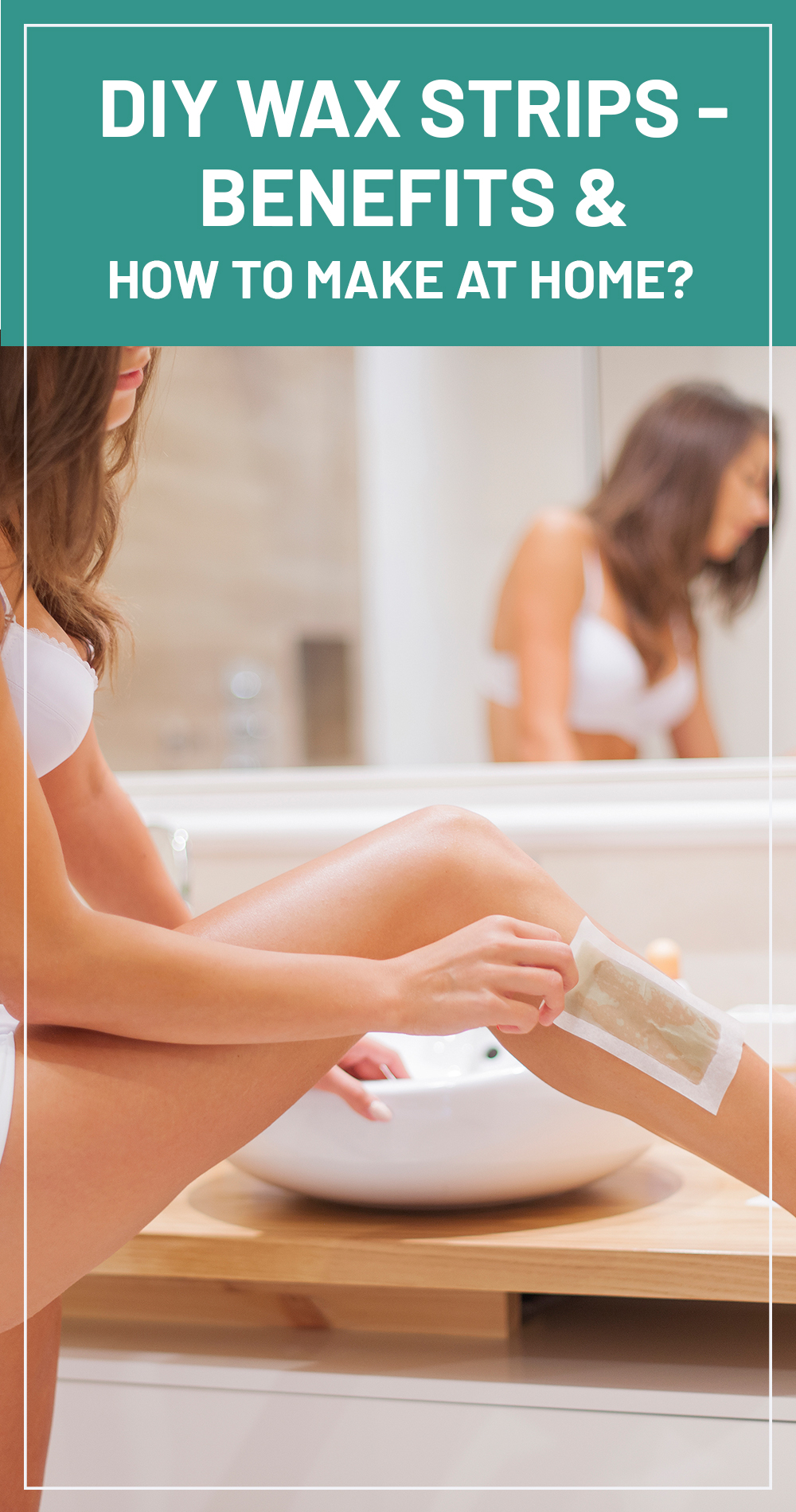
Important: This article is for informational purposes only. Please read our full disclaimer for more details.
Waxing is one of the best ways of removing unwanted body hair. The best part about waxing is it can be done at home if you have all the tools and know the proper techniques. You are here because you are keen to know about DIY wax strips. It means you are a pro at waxing and doing it yourself at home. Trying some DIY and making your own wax strips is a good idea to save some extra bucks. So, let’s find out how you can create wax strips and use them effectively to save time and money.
Article Contains
What Are Some Good Alternatives To Wax Strips?

You can find multiple options on the internet as an alternative to wax strips, but are they all effective? Let’s check them out!
Old Magazine Covers: If you are in the middle of waxing sessions and suddenly run out of wax strips, one thing at home can come to the rescue- an old magazine. Yes, you can actually use an old or discarded magazine to create DIY wax strips. The covers of magazines are pretty hard yet soft and can be applied over wax. Once you pull them in the opposite direction of hair growth, just like the wax strips, the hair also comes out. It is one of the old and popular ways and a great alternative to wax strips. However, the risk of having more mess with the magazine cover is there. While it is ideal to use only store-bought waxing strips for the best results, magazine covers come to the rescue when you have no other option.
Parchment Paper: Some people also think about using parchment paper as a wax strip. Even though it may seem like a good choice, it is not ideal. Since the parchment paper is very thin, the chances of it tearing are usually high when pulled. You may have to reapply and do it again to remove the hair, which will become a very time-consuming process.
Cloth strips: Homemade cloth strips are a great alternative and an eco-friendly option to wax strips. The best part is they are reusable. You can prepare cloth strips by cutting a clean cotton cloth in the same dimension as waxing strips. Since the cloth is thick, it will adhere to the skin and hair perfectly and will not tear when pulled off the skin. Once you have waxed using cloth strips, wash them and store them for future use.
Duct Tape: Duct tape is also an option when you are not left with waxing strips, but the result will not be very fine. Duct tape is strong and sticky. It will adhere to the skin and work well on long hair. However, the pain could be excruciating once you pull it off the skin. Also, it is more likely to damage the skin from rough waxing. So, I won’t suggest using duct tape for waxing.
Paper Towels: Paper towels are too thin to wax. They are delicate and made to soak liquid. As you apply a paper towel to wax, it will soak the wax and tear off while pulling, leaving behind a sticky mess.
Reusing Wax Strips: You can reuse wax strips only until they adhere to the skin and remove hair when pulled off. In general, most of the wax strip instructions say to use wax strips twice in the same waxing session. After this, the wax strips lose their efficiency and leave your skin vulnerable to bacterial and fungal infections that the wax strip might pick up between uses. So, the best DIY wax strips are old magazines and cloth. When you use these two as an alternative to store-bought wax strips, keep these points in mind-
- Magazine: The magazine should have glossy paper because the gloss-coated paper has a high sheen. This coating has less bulk and opacity and reduces ink absorption. Just like ink, wax absorption is also less in glossy paper, making it an ideal option when there are no waxing strips.
- Cloth: When you are using cloth, make sure it is clean. The cloth will be the best choice if you are more into eco-friendly options. Buy a cotton cloth or just any old cotton t-shirt for the same. Just make sure that it is clean, so there are no chances of infection. Since cloth strips are reusable, use good quality cloth for long-lasting results.
Benefits Of Waxing At Home

Just like DIY wax strips, you can also prepare wax at home and make your own waxing kit. There are many benefits of waxing at home, and some of them are-
Saves Money: DIY wax strips and wax can be made at home with minimal cost. You don’t need to spend a penny on waxing strips as old magazines and cloth will work. And for making wax, you can use some basic ingredients available in the kitchen, like sugar.
Ingredients Of Your Choice: The risk of infections is always there in the salon. Also, you don’t know what chemicals are there in the wax. However, all these dilemmas rule out when you create your DIY wax strips and wax.
Gives you privacy: It could be intimidating to allow a stranger to wax your body parts, especially in intimate areas. Therefore, waxing at home is the safest choice.
Final Words
While visiting a salon for waxing could cost you around $100, making everything at home will save huge bucks. So, be a little creative and try ways to make a DIY waxing kit and enjoy your self-pampering sessions.
Image Credit: freepik
You Might Also Like
- Brazilian Wax Strips: How To Do And Aftercare Tips
- How to Wax Your Legs at Home
- DIY Lemon Sugar Body Scrub Recipe
- How Long Does Hair Have To Be To Wax?
- 5 Best Nose Wax Kit For Hair Removal
- How Long Does A Wax Burn Last
- 7 Best Waxes For Coarse Hair
















